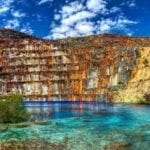 Mysteries
Mysteries  Mysteries
Mysteries  History
History 10 Surprising Stories About the Texas Rangers
 Humans
Humans 10 Philosophers Who Were Driven Mad by Their Own Theories
 Miscellaneous
Miscellaneous 10 Video-Game-Worthy Weapons and Armors from History
 Weird Stuff
Weird Stuff 10 Psychics Who Accurately Predicted Wartime Events
 The Arts
The Arts 10 Pieces of Art Inspired by a Broken Heart
 Health
Health 10 Science Fiction-Sounding New Medical Treatments
 History
History 10 Surprising Facts About the Father of Submarine Warfare
 Space
Space Ten Astonishing New Insights into Alien Worlds
 Weird Stuff
Weird Stuff 10 Bizarre Summer Solstice Rituals Still Practiced Today
 Mysteries
Mysteries Top 10 Haunting Facts About the Ghost Ship MV Alta
 History
History 10 Surprising Stories About the Texas Rangers
 Humans
Humans 10 Philosophers Who Were Driven Mad by Their Own Theories
Who's Behind Listverse?

Jamie Frater
Head Editor
Jamie founded Listverse due to an insatiable desire to share fascinating, obscure, and bizarre facts. He has been a guest speaker on numerous national radio and television stations and is a five time published author.
More About Us Miscellaneous
Miscellaneous 10 Video-Game-Worthy Weapons and Armors from History
 Weird Stuff
Weird Stuff 10 Psychics Who Accurately Predicted Wartime Events
 The Arts
The Arts 10 Pieces of Art Inspired by a Broken Heart
 Health
Health 10 Science Fiction-Sounding New Medical Treatments
 History
History 10 Surprising Facts About the Father of Submarine Warfare
 Space
Space Ten Astonishing New Insights into Alien Worlds
 Weird Stuff
Weird Stuff 10 Bizarre Summer Solstice Rituals Still Practiced Today
Top 10 Unconventional Types Of Organized Tourism
From time to time, we need to get away from it all—well, from everything, at least, but our hobbies. More and more, people seek to combine tourism with hobbies as a way to double their fun. While some of us are attracted to the types of hobbies that many cozy mystery writers tend to focus on in their novels, others seek thrills, engaging in hobbies involving high-risk adventures or seek out the unusual and the exotic.
Whether your own hobby is observing sharks swimming past you in the ocean, investigating allegedly haunted locations, chasing storms, tracking killers, visiting battlefields, being freaked out by instruments of torture, exploring castles, wandering burial grounds, scouting film locations, or visiting the mean streets of the world, there’s a type of tourism just for you; it is probably on this list.
Related: Top 10 Iconic Places Pictured From Behind
10 Shark Tourism
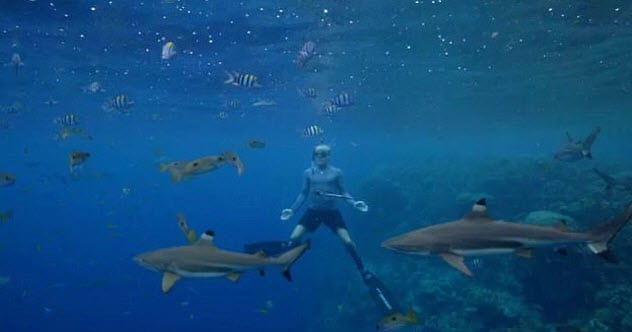
If you were a typical tourist, you might not expect to hear the ominous music of the Jaws theme song, signaling the appearance of the movie’s monstrous great white shark. However, if you are a shark tourism enthusiast, the frantic notes might be all you imagine when you encounter one of these fearsome marine “monsters” swimming by your chartered boat.
Shark tourism has become popular off Massachusetts’s Cape Cod, as more and more charter boat services compete to offer tourists a chance to marvel at a great white shark in an up-close and personal manner that is all but guaranteed to thrill. The addition of shark spotting has been added to the established nautical tourist pursuits of whale and seal watching.
During a September 2021 excursion, two newcomers to shark tourism, construction foreman Michael Simard and his partner Penny Antonoglou, a civil engineer, found the experience exhilarating. “It’s awe-inspiring, really,” Simard enthused, adding, “I didn’t realize how graceful they were. It does put it into perspective that this is their element, and we just share it with them.”
The local charter boat operators have successfully transformed a negative—shark attacks against humans—into a positive, as the public has begun, albeit “tentatively,” to appreciate the opportunity to scout the waters for sharks. Shark tourism is not hurt by the existence of The Atlantic White Shark Conservancy, a nonprofit organization, and its renovated Shark Center, which displays the results of its research concerning local sharks, and by the presence of merchants selling shark-related merchandise, such as jewelry, stickers, and apparel. The stretches of beaches also lure visitors, including shark tourists like Simard and Antonoglou.
Not all local residents are as keen on shark tourism as visiting tourists. In addition to more training and equipment for lifeguards, there is a demand for “proactive shark safety measures, such as undersea detection, land-based warning systems and drone surveillance,” Associated Press reporter Philip Marcelo says, adding that, meanwhile, “local surfers have taken to arming themselves with shark repellents, including personal devices that emit electrical fields that supposedly deter but don’t harm sharks.”
Despite the costs of chartered tours, which range from $1,600 to $2,500 per six-passenger boat, shark tourism does not appear in danger of foundering anytime soon.
9 Ghost Tourism
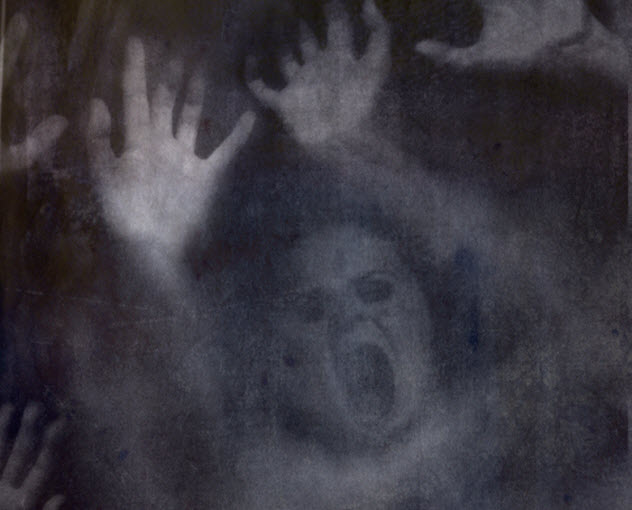
If shark tourism is not for you, maybe ghost tourism is a better fit. If so, you are in luck: lots of cities offer ghost tours. One such metropolis is Washington, D. C. Along with museums, art galleries, theaters, parks, a zoo, a botanical garden, and a host of other amusements, including Congress, the city includes among its attractions a number of ghost tours. You don’t have to go during “tourist season,” either; several of the tours operate year-round.
According to a Washington.org article on the topic, you can tour historic Georgetown, home of the external staircase seen in The Exorcist; historic Oak Hill Cemetery; and the pre-revolutionary Old Stone House, among other sites.
Across the street from the White House, you can visit Lafayette Park, where guides will regale you with conspiracy tales, accounts of “crimes of passion,” stories of duels, and reports of assassinations, each of which has supposedly resulted in a haunting. The spooky stories will likely make your hair stand on end.
The Executive Mansion itself may be off-limits, but a tour of Capitol Hill will alert you to the dangers of legislative wrangling and acquaint you with the “dancing statues” in Statuary Hall and with the mysterious cat that is said to be associated with the Lincoln conspiracy trial. There are plenty of other ghost tours, too, not only in Washington, D. C., but also in other cities across the country and around the world, so ghost tourism, it seems safe to say, is not likely to disappear.
8 Storm Tourism
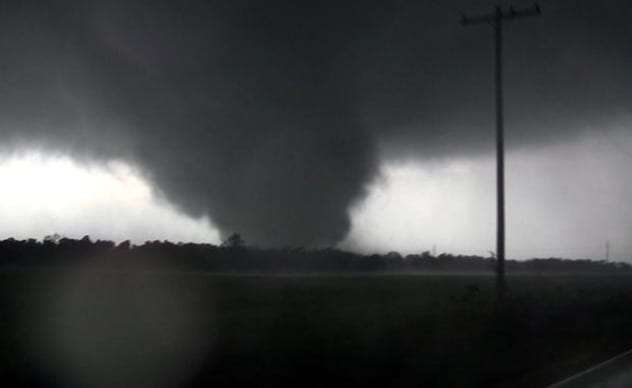
“It was a dark and stormy night”: the opening sentence of Edward Bulwer-Lytton ‘s novel, Paul Clifford, perfectly summarizes the appeal of storm tourism, which has become quite a boon for places located in regions characterized by inclement weather. A form of ecotourism, it is perfect for travelers bold enough to brave the elements at their fiercest. Storm tourists are driven, suggests Charles McDiarmid, Wickaninnish Inn’s managing director, by their need to experience, firsthand, “huge winds, thirty-foot waves, and driving rain,” for it is, in such moments, that “Mother Nature comes alive.”
The inn, located in Tofino, British Columbia, Canada, on the Pacific coast, offers a view of the ocean that is clear all the way to Japan. The setting is beset by forceful, “battering” weather effects, and each of the inn’s rooms, in addition to a fireplace and a view of the ocean, offers a closet stocked with “a complete storm kit—rain slickers and boots sized-to-fit each guest”—perfect for exploring threatening weather. Once, the area might have been subject to seasonal tourism, but, for weather tourists, as McDiarmid notes, “There is no off-season anymore.”
7 True Crime Tourism

True crime is another form of tourism for travelers with enough intestinal fortitude to visit gruesome crime scenes, and the several Jack the Ripper walking tours in east London’s Whitechapel area are not the only choices intrepid travelers have; a continental destination that true crime tourists will not likely want to miss is the five-day tour of fabled Transylvania, where, according to NBC News, Vlad the Impaler, “who is estimated to have killed 80,000 people,” may have, on one occasion, “dined among a veritable forest of defeated warriors writhing on impaled poles.”
The United States also offers plenty for fans of American true crime television series. In Los Angeles, California, true crime tourists may opt to visit the former stomping—or stalking—grounds—of Charles Manson and his “family.” The serial killer known as The Axman is one of the main draws for New Orleans, where he split his victims’ heads open after breaking into their houses. Milwaukee, Wisconsin, is famous for its beer—and infamous for its cannibalistic serial killer, Jeffrey Dahmer. Tourists can take a walk, so to speak, in his shoes, or, if they prefer, they can tread the ground of New York City’s murderous 19-century gangs.
Not to be outdone by the Big Apple, Chicago, the “Windy City,” offers bus tours of sadistic H. H. Holmes’s unhappy hunting grounds. Other possibilities include tours that trace Ted Bundy’s wanderings around Capitol Hill in Seattle, Washington, and the Museum of Death in Hollywood, California.
6 Battlefield Tourism
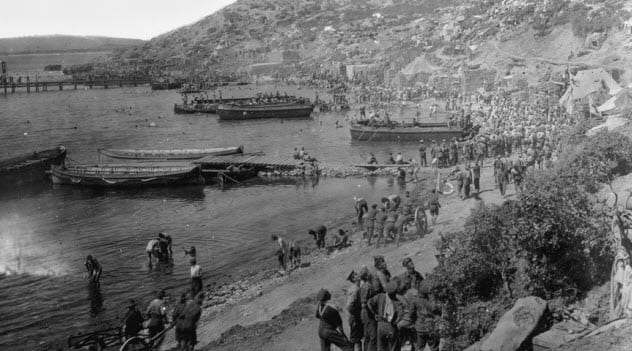
Not everyone can fight a particular battle, and no one today can fight one that occurred in the past. These may be two motives for travelers who engage in battlefield tourism. By visiting battlefields, they can get a sense of what it might have been like to fight a specific battle in a particular war for a certain reason. Besides, as University of Glasgow graduate student Stephen Thomas Miles points out in his 2012 PhD thesis, battlefields are steeped in the “historic, cultural, nationalistic and moral” elements of a nation’s past, elements which continue, in the present, to resonate “to people on a national as well as a local scale.”
His thesis examines four historic United Kingdom battlefields in particular, those of Hastings (1066), Bannockburn (1314) , Bosworth (1485) and Culloden (1746), and the World War I Western Front in France and Belgium. What do the four UK sites “mean” to the tourists who visit them, he wanted to know, and how does the actual Front stack up to its visitors’ experiences?
The commercialization of battlefield sites, he found, diminished visitor’s “visceral . . . experience,” while the “grief” that visitors associated with the Front “eclipsed” its “deeper meanings,” by which he means, it seems, its “historic, cultural, nationalistic and moral” elements. In short, commercialization expunged the emotional impact of such sites, while battlefields that were not commercialized retained much of their raw, emotional power.
5 Torture Tourism
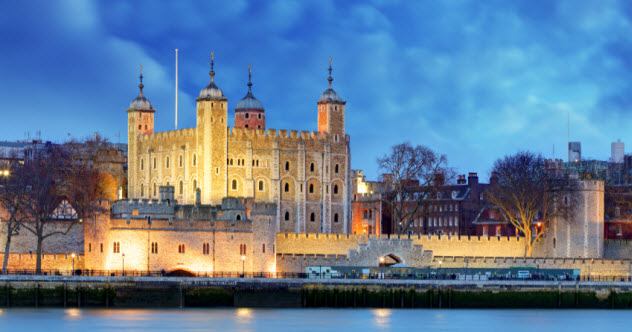
Devotees of torture tourism need to be on their guard: a lot of the sites that purport to exhibit genuine instruments of torture feature inauthentic items. However, for the discerning torture tourist, the real deal is available. The Tower of London showcases exhibits that replicate the history of the practice of inflicting excruciating pain, a method by which criminal suspects and women accused of practicing witchcraft were “persuaded” to confess. As “Rick Steven’s Europe” points out, “The Tower was a gleaming reminder of the monarch’s absolute power over his subjects.” The “limb-stretching rack” is only one of the reminders of the monarch’s divine right to rule that is on hand in the Tower.
If torture excites you, add these other authentic sites to your itinerary: the Medieval Crime Museum in Rothenberg, Germany, and its “instruments of punishment and execution”; southwestern France’s Maison Forte de Reignac, and its “60 instruments of torture,” which include an iron maiden; and Belgium’s Gravensteen fortress, home to the finger screw and a waterboarding exhibit. Any torture tourist is bound to agree with Huckleberry Finn’s observation that “human beings can be awful cruel to one another.”
4 Castle Tourism
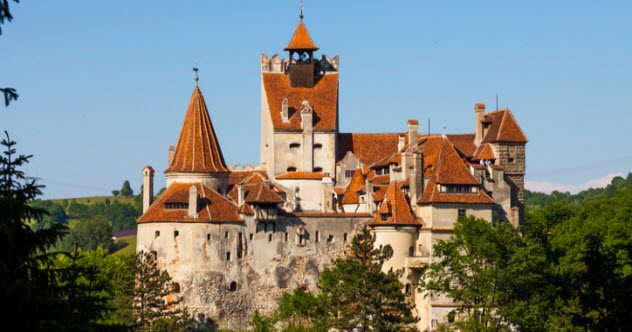
Castle tourism, a good adjunct to torture tourism, has plenty of attractions to offer sightseers. There are thousands of castles across Europe. These magnificent edifices, combining residential apartments and administrative chambers with extraordinary defenses, also exist in Africa, Asia, North America, and South America.
One fortification that captures a lot of castle tourists’ attention is Bran Castle, which is better known by its nickname “Dracula’s Castle.” Located in Transylvania, a region of Romania, the castle’s pale-gray stone walls rise from a fountain of rock amid the forested side of a mountain overlooking green fields, high hills, and evergreens. The sight elicits a sense of majesty and history; in its shadow, a tourist is likely to feel that he or she stands in the presence of majesty.
Outside, visitors see the castle’s courtyard and the elevated corridors, staircases, walls, and roofs that surround it. Upon entering the castle, a row of photographic portraits greets visitors: the likenesses of the castle’s owners, from the late Middle Ages to the early 20th century. In both Romanian and English, a display recounts the history of the castle from 1400 onward.
Steep staircases wind their way to upper floors, and tourists glimpse arched doors of rough wooden planks, before, entering the castle’s apartments and rooms, they are presented with sights of ornately carved furniture; finished stone fireplaces; framed tapestries; chandeliers; paintings; and a host of other decorative, artistic, and utilitarian articles.
When it seems that the top has been reached, there are yet more flights of stairs, more floors, more rooms, more exhibits, more artifacts, more surprises to see: fine furniture, suits of armor, shields, maces, lances, swords and knives, gowns and dresses, and lordly attire.
Not all is glamour and beauty, however: there is also the rack; the iron maiden; a wooden chair, the back, seat, and sides of which are equipped with rows of large, sharp spikes; and other instruments of torture just as horrible to contemplate.
Dracula himself is the only exhibit tourists won’t find in the castle. Despite its nickname, Dracula’s Castle was never associated with the Prince of Darkness. As Duncan Light points out in his book Dark Tourism: Practice and Interpretation, “Castle Dracula . . . never existed outside [Bram] Stoker’s imagination,” and, in fact, the association between the vampire and Bran Castle is not something the Romanian government encourages. Still, it is a nice place to visit, even if Dracula never lived there.
There are dozens of tours of the Palace of Versailles. According to the website Viator, the palace has come a long way from its humble beginning as a “hunting lodge”; today, it “features 700 rooms replete with frescoed ceilings and carvings,” as well as its Versailles Gardens, “which brim with geometrically designed walkways and fountains.” The Palace’s beauty and grandeur are beyond words; to be believed, it must be seen. Many tourists would agree that “no visit to France is complete without experiencing the grandeur.”
Fortunately, reasonably priced tours allow visitors to take in the sights of the palace and its environs. One focuses on a tour of the gardens and brings visitors up to speed on the palace’s former resident, King Louis XIV. A second tour takes visitors inside the palace, where they can marvel at the luxurious rooms in the “playground of the French monarchs.” A third alternative includes a tour of the gardens of Claude Monet’s house in nearby Giverny, which inspired many of the artist’s impressionistic paintings. Other possibilities include small-group tours; walking tours; bicycle tours; bus tours; tours by train; “access to the Queen’s Hamlet”; and an “optional fountain show.”
Many of the tours are affordable, but a few are more costly. The most expensive one, which provides an 8- to 12-hour excursion to Versailles and Giverny, is by chauffeured limousine and includes bottled water and lunch at a restaurant selected in advance by the tour’s group, which can number up to four.
3 Cemetery Tourism
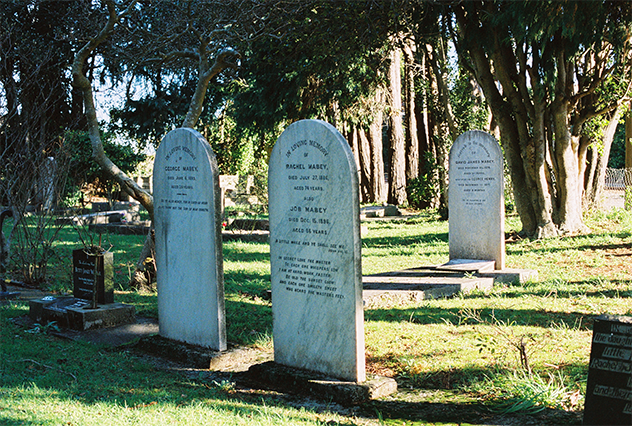
Cemetery tourism? Yes, it is one of the relatively new types that has recently captivated the public—or, at least, a portion of the public. As with the other tourism destinations on this list, cemeteries in various parts of the world offer tours of their premises, despite the fact that few, if any, visitors express any interest in buying a tomb of their own so they can become permanent guests.
In New Orleans, Louisiana, or “The Big Easy,” as it is more affectionately known, cemetery tourists often visit St. Louis Cemetery No. 1 for an “educational walk” through the graveyard before checking the allegedly haunted museum, a mortuary chapel, and other points of interest. According to U. S. News & World Report, the cemetery is home, so to speak, to “the city’s famous Voodoo queen Marie Laveau.”
The same cemetery also includes the tomb of civil right activist Homer Plessy and will become “the future resting place of Nicolas Cage.” Other tours of St. Louis Cemetery No. 1 and other of local graveyards focus on jazz, the tomb’s architecture, ghosts (of course), cemetery history, voodoo, “above-ground burial practices . . . . [and] prostitution, politics and New Orleans folklore.” In death, as in life, there is something, it seems, for everyone.
The distinction of being the most-visited cemetery of the world belongs to Père-Lachaise, the 100-acre park on the northeast side of Paris, France. Its 70,000 tombs make it the city’s largest burial ground as well. As well-known for its history as for its beauty, it opened for business in 1804, but, at that time, it was located on the edge of town, to guard against “the possibility of disease spreading from the other overcrowded cemeteries,” a Canadian Broadcasting Corporation (CBC) Radio article states.
Napoleon Bonaparte flexed his marketing skills in his promotion of the cemetery by having the remains of Henry III’s wife Eleanor of Provence, poet Jean de la Fontaine, and playwright Jean-Baptiste Poquelin (better known as Molière) relocated to the new graveyard. As the CBC Radio article observes, “Not long after, Père Lachaise became the place to be.”
Since then, many other celebrities from all walks of life have selected Père-Lachaise as their final resting place. Included among this august group are composer Frederic Chopin, minus his heart, which reposes in Poland; opera singer Maria Callas; singer and cabaret performer Edith Piaf; and mime artist Marcel Marceau. A couple of the interred are not French. One, author Oscar Wilde, was Irish; the other, rock star Jim Morrison, was American. It’s not difficult to see why so many tourists flock to Père-Lachaise.
2 Film Tourism
According to Forbes, in 2019, the film industry made $101 billion USD worldwide. Obviously, such revenue suggests a huge international fan base, some of whom are film tourists as well as moviegoers.
Lots of movie locations draw tourists, including, besides Los Angeles itself, pretty much anywhere else a popular film has been shot. New Zealand is no exception. As Jared Cowan’s Los Angeles Magazine article points out, “A number of analyses credit the New Zealand locations from The Lord of the Rings trilogy with bringing film tourism into the mainstream.” Companies are only too happy to offer tours, ranging from the $139 half-day tour to the $5,100 fourteen-day alternative, but, for budget-conscious travelers, “fans can venture to some of their favorite filming locations” free of charge, especially if the sites are located in Tinsel Town.
The house that appeared in Father of the Bride (1991), starring Steve Martin and Diane Keaton, “has become an attraction in its own right,” the article notes, as has Cassell’s Music, the store featured in Wayne’s World (1992), with Mike Meyers and Dana Carvey. Eckhart Auto Body, of 2002’s Punch-Drunk Love fame, starring Adam Sandler and Emily Watson, is also a favorite spot on the film tourism circuit, as is the Craftsman house that appears in Neighbors (2014) starring Seth Rogers and Zac Efron.
The Episcopal Church of the Ascension, a filming location for The Fog (1980), starring Adrienne Barbeau and Jamie Lee Curtis; the house that doubled for the Marty McFly residence in Back to the Future (1985), with Michael J. Fox; and Nancy Thompson’s house in A Nightmare on Elm Street (1984), starring Heather Langenkemp, John Saxon, and Robert Englund, all remain hot spots for film tourists.
Plenty of other filming locations are popular destinations for budget-minded film tourists, but many of them are private property, and visitors are expected to respect the owners’ rights and are reminded, Please, don’t eat the daisies!
1 Slum Tourism

Needless to say, some sightseeing pursuits can be controversial. It is safe to say that slum tourism is one such pastime. Having had its start over a century ago, when, as Christine Bednarz points out in her National Geographic article, “rich Londoners began braving the city’s ill-reputed East End beginning around 1840,” the dubious diversion soon spread to rich New Yorkers, who enjoyed checking out the “brothels, saloons, and opium dens” in such areas of the city as the Bowery or Five Points. As Bednarz observes, “Visitors could hardly believe their eyes.”
Since those early days, slum tourism has spread to many other cities, including the “dark alleys and corrugated shacks of the slums” of Dharavi in Mumbai, India; the “racially segregated areas” of South African townships; the towering mazes of mountainside favelas in Rio de Janeiro and other Brazilian cities; and many other such places of poverty and despair, such as the cemetery slums (and others) in the City of Manila, the capital of the Philippines.
Some condemn slum tourism as a haughty and disdainful taking of pleasure in the misery of others, a form of reprehensible schadenfreude based on privilege. Others defend such outings, maintaining that these jaunts increase the awareness of the “haves” who, otherwise, might remain ignorant of the plight of the “have-nots.” In addition, slum tourism may reveal opportunities for the privileged to provide meaningful assistance to the disadvantaged. It is better to know than to ignore, advocates add, and it is better yet, to assist.






